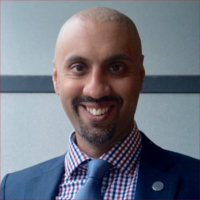Cultural Competency in End of Life Care in Ontario
Ontario is the most diverse province in Canada, and one of the most diverse regions in the world. The forms of diversity found in Ontario include different cultures, languages, ethnicities, and beliefs.
These diverse population groups also trend across age demographics, including the elderly, where there are often special care needs that are distinct from the rest of the population. The prominence of end-of-life care among the elderly also means that the conjunction of diversity and demographics raises some interesting issues in the provision of health care.
We recently concluded a study through the Law Commission of Ontario as part of their project on Improving the Last Stages of Life. In this study, we found that there was still a long way to go in developing the provision of faith-based and culturally competent services for patients in Ontario. Although most of those working in the health system can be open-minded and cooperative around these issues, they were not given proper consideration in advance.These priorities are often delegated as an afterthought, and the presence of systemic directions to provide guidance to health institutions and practitioners appears to be lacking.
The highly personalized and individualized nature of health care services in the law necessitates proper consideration of a patient’s culture and faith. Assessment tools are available to help explore cultural relevance in end of life care, but are rarely implemented in the clinical setting. For example, a few hospitals have utilized the Checklist to Meet Ethical and Legal Obligations to Critically Ill Patients at the End of Life (ChELO) to meet the ethical and legal obligations of properly ascertaining a patient’s values and beliefs.
The greater challenge appears to be in allocating sufficient resources for training and increasing awareness of health care practitioners. One way to address this may be through better training and awareness through professional education of health care disciplines initially, with the understanding that this knowledge would have to be passed on to others and implemented systematically once in the clinical setting. Ultimately this still requires buy-in from senior leadership, and a recognition that there is a legal obligation under human rights principles to foster this broader change.
Our report provided 11 recommendations:
- Increasing awareness and clarity among health practitioners about patient rights to access and practice religious and cultural beliefs under the Charter of Rights, Ontario’s Human Rights Code, and various professional practice directives
- Increasing awareness and clarity among adherents to a faith or cultural group about variations within their system of beliefs and practices. Attention to faith and cultural differences should be individualized to each person, and one must not assume that a patient belongs to a cultural monolith.
- The need for greater uniformity among palliative care services across the province to better normalize access to, and accommodation of, various faith and cultural practices, and thus achieve a more holistic model of patient-centered care for all
- The need for greater access to culturally-competent health care throughout health care institutions in Ontario. This would ensure a commitment from health care providers and caregivers to better understand patient needs.
- The integration of faith and cultural preferences into the formal education curricula of health care teaching institutions. A graduating doctor or nurse should have a basic idea of the nature of various religions and their general requirements, preferences and practices.
- Institutions should provide a variety of tools and resources for health practitioners to apply in their patient care, including readily accessible online reference materials.
- As some institutions in very multi-religious regions of the province have done, create a better network of multi-faith and cultural leaders so hospitals, LHINs, and individual practitioners can work closely and get support from faith leaders when needed.
- Institutions should implement a structured approach to documenting the spiritual, cultural, and religious values and preferences of their patients and their families, as some institutions have done with the ChELO process.
- Pastoral Care Education programs need to formally invite faith leaders and lay followers to join, and “chaplaincy” programs should evolve from what were once specific (Judeo-Christian) faith-based supports to multi-faith spiritual support services.
- Legislation governing the Consent and Capacity Board needs to be reformed to give medical expertise on the prevailing standard of acceptable and appropriate care a weight equivalent to that given to a patient’s final wishes. There should also be greater clarity around the patient’s right to refuse medical treatment. Furthermore, for patients who involve faith or community leaders in their care, the legal parameters of these leaders’ involvement at the end-of-life should be elucidated. This is especially important with respect to the issue of informed consent where faith leaders counsel patients on the compatibility of medical treatment options with cultural and faith traditions.
- Health care institutions should provide essential supportive resources like private prayer rooms for faith- and spiritual-based end-of-life practices. Public hospitals and community-based palliative care hospitals should also assist patients with accessing private prayer rooms. If a patient cannot physically access a prayer room, hospitals should provide palliative care patients with assistance in scheduling on-site hospital visit with community and faith leaders.
Culturally competent care is a Canadian value, and we should all work towards developing further the unique Canadian health care experience.



In the midst of all this, is the ongoing need for the legal and health care profession to be bilingual in other languages rather than just English-French.
Non-English linguistic competency by lawyers and care-givers to explain complex/highly emotional matters in simple objective terms and carefully phrased options, is so key. Never assume family members have that non-English linguistic competency.. to explain to the patient. Generational differences and assimilation of other family members (which results in loss in mother tongue fluency/comprehension) will create all sorts of complex communication challenges.